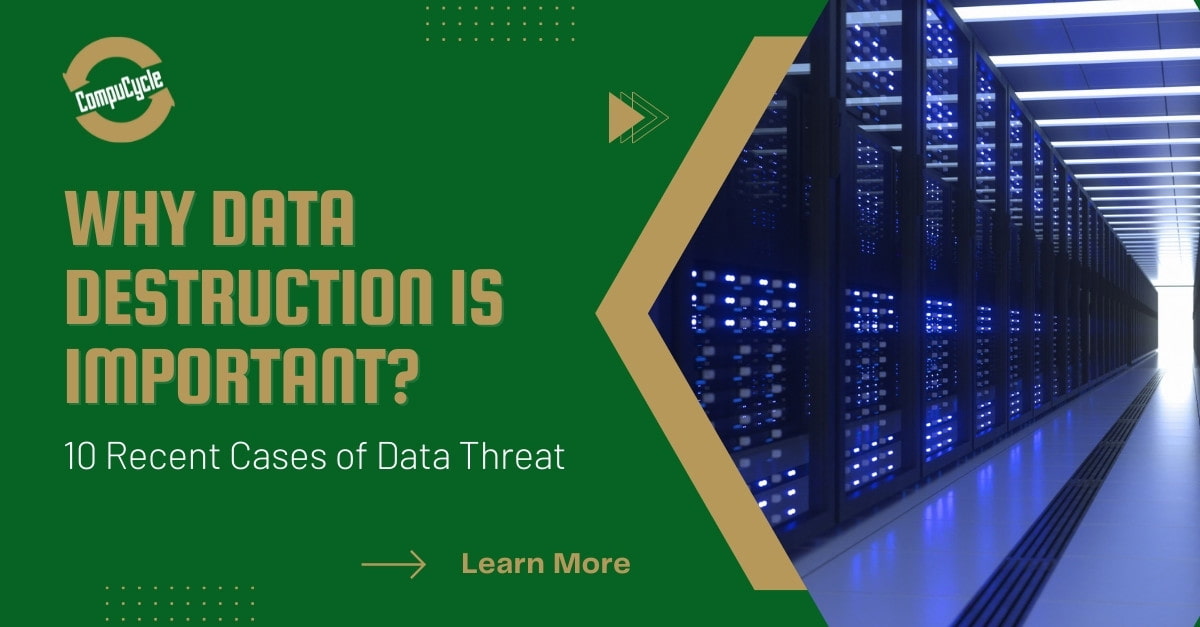Necessary Cyber Security Practices for Effective Data Destruction Approaches
Necessary Cyber Security Practices for Effective Data Destruction Approaches
Blog Article
Checking Out the Value of Data Damage in the Context of Computer System Protection Services and Protecting Confidential Data
In a period where information violations are significantly usual, the importance of effective data destruction can not be overemphasized. What techniques can companies apply to boost their data damage procedures?
Comprehending Data Destruction
Data destruction is a critical element of computer safety that includes the long-term removal of data from storage space devices to stop unauthorized access and potential data breaches. In an increasingly electronic landscape, companies encounter heightened threats related to delicate information being poorly accessed or exploited. Efficient data destruction safeguards versus these risks, guaranteeing that personal dataâEUR" such as client info, copyright, and monetary recordsâEUR" can not be recouped after disposal.
Comprehending the relevance of information devastation extends beyond simple conformity with governing and lawful structures; it is essential for maintaining organizational integrity and depend on. When information is poorly managed or improperly ruined, the effects can be serious, including monetary loss, reputational damages, and lawful responsibilities.

Methods of Information Eradication

One widespread method is information wiping, which includes overwriting existing information with random patterns several times. This strategy makes the original data irretrievable, making it a popular choice for organizations looking for to shield secret information.
One more method is degaussing, which makes use of a powerful electromagnetic field to interrupt the magnetic domains on storage devices, successfully eliminating the information. This method is especially effective for magnetic media however is not applicable to solid-state drives.
Physical devastation is one more robust method, squashing or entailing the shredding of storage tools. This technique guarantees that information healing is virtually difficult, making it excellent for very delicate info.
Lastly, file encryption can serve as a corresponding technique to information removal. By securing information prior to deletion, companies can add an additional layer of protection, guaranteeing that even if residues are recuperated, they stay unattainable without the decryption secret. Each technique must be selected based on the degree of data level of sensitivity and the specific safety and security requirements of the company.
Legal Compliance and Information Safety
Organizations should navigate a complex landscape of legal demands associated with data protection, particularly after executing methods of information elimination. Numerous guidelines, such as the General Information Defense Guideline (GDPR) and the Medical Insurance Mobility and Accountability Act (HIPAA), impose stringent guidelines on exactly how organizations have to deal with and dispose of delicate data. Failing to follow these regulations can result in substantial lawful effects, consisting of considerable fines and reputational damages.
Data damage procedures should be meticulously recorded to demonstrate compliance with appropriate regulations and standards. This paperwork not only functions as proof of adherence to legal obligations yet also highlights a dedication to guarding sensitive details. Organizations needs to also develop clear plans concerning data retention and damage timelines, guaranteeing that data is not held longer than necessary.

Additionally, routine audits and evaluations of data devastation practices are vital to maintain compliance and adjust to advancing lawful frameworks (data destruction). By proactively attending to lawful requirements, companies can reduce dangers related to data violations and show their dedication to information safety. Ultimately, prioritizing legal compliance in data devastation procedures is not just a regulatory obligation, however a basic facet of a robust information protection approach
Influence On Business Credibility
The online reputation of a business can be dramatically influenced by its method to information destruction and management. In today's electronic landscape, where data violations can take place at any minute, the failure to effectively throw away sensitive information can bring about extreme consequences. Organizations that improperly manage information devastation risk revealing personal customer details, which not only breaks privacy legislations however additionally wears down count on amongst stakeholders and clients.
A tarnished credibility can cause decreased client loyalty, as clients end up being hesitant to engage with a service that has actually demonstrated oversight in shielding their information. In addition, adverse publicity surrounding an information violation can have a long lasting effect, as potential consumers could be discouraged by the perceived lack of safety and security. This can lead to a straight decline in revenue and market share.
Moreover, companies that prioritize information destruction as component of their security method can enhance their track record by showcasing their commitment to safeguarding discover this info here delicate info. By taking on rigid information monitoring techniques, companies can not just alleviate risks but additionally position themselves as reliable entities in their respective markets, therefore enhancing their general brand name photo.

Ideal Practices for Secure Disposal
Executing best practices for safe and secure disposal of information is essential for mitigating risks related to data violations and making sure conformity with personal privacy laws. Organizations ought to embrace a comprehensive information disposal policy that lays out treatments for both physical and digital information damage.
For physical data storage space tools, such as tough drives, shredding or degaussing is suggested to avoid information recovery. Additionally, companies need to preserve a chain of safekeeping documentation during the disposal procedure, making certain accountability and traceability of disposed products.
For digital data, using software application that follows market criteria for data wiping is critical. This software must overwrite existing data numerous look at this site times, making recovery essentially difficult. It is also vital to verify the performance of the information destruction process through audits or third-party analyses.
Training workers on safe and secure disposal techniques adds another layer of safety, as human mistake can usually cause information direct exposure. On a regular basis evaluating and updating disposal plans makes sure positioning with advancing regulations and technical advancements. By implementing these ideal techniques, organizations can significantly reduce the danger of unauthorized information accessibility and boost their total data security strategy.
Verdict
To conclude, information damage is an essential facet of computer safety and security services that guarantees the security of personal info from unauthorized access. Applying reliable techniques of information obliteration, sticking to lawful compliance, and identifying the impact on business track record are essential components of an extensive data security strategy. By adopting best techniques for protected disposal, companies can promote depend on with customers and safeguard sensitive data, eventually adding to an extra protected digital landscape.
In an era where information violations are significantly typical, the importance of effective information devastation can not be overstated.Information devastation is an important component of computer system protection that involves the irreversible elimination of data from storage space gadgets to view it now protect against unauthorized gain access to and possible data violations. Organizations ought to also develop clear plans regarding information retention and damage timelines, guaranteeing that information is not held longer than essential.
By proactively dealing with lawful demands, companies can reduce risks associated with data violations and show their dedication to information protection (data destruction). Ultimately, focusing on legal conformity in data devastation procedures is not simply a regulative responsibility, yet a fundamental aspect of a durable information protection approach
Report this page